Table of Contents
ToggleWhat are the different types of lens for Cataract Surgery?
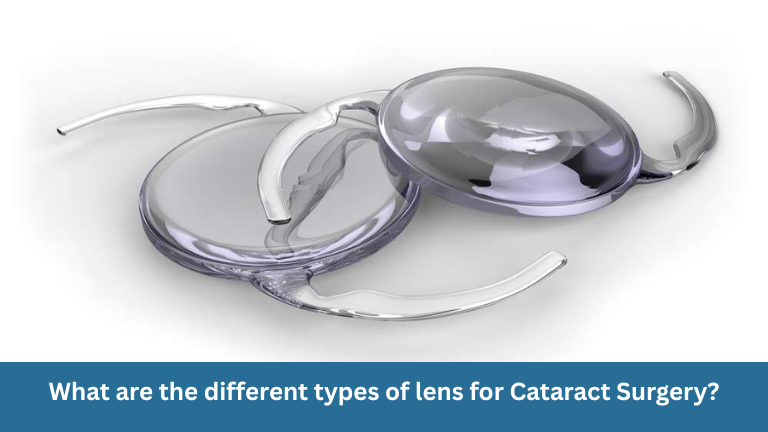
Cataract surgery is one of the most common and successful procedures performed worldwide. While removing the cataract is a vital step toward clearer vision, the type of intraocular lens (IOL) implanted during surgery plays a key role in the quality of vision after the procedure.
Thanks to advancements in technology, there are now more lens options available than ever before. Choosing the right lens depends on several factors, including lifestyle, vision needs, and overall eye health. In this blog, we explore the different types of IOLs and how to determine which one may be best suited for your individual needs.
What is an Intraocular Lens (IOL)?
An intraocular lens (IOL) is an artificial lens implanted in your eye to replace the natural lens that has become clouded due to cataracts. These lenses are made of clear, flexible materials and are designed to remain in place permanently.
The type of IOL you receive will affect how well you can see after surgery and whether you will need glasses or other corrective lenses.
Types of Intraocular lenses for cataract surgery
1. Monofocal IOLs (Standard Lens)
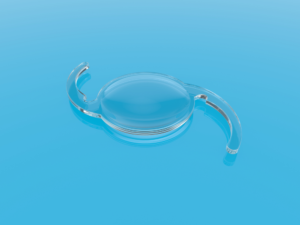
Best for: Clear distance vision
May still need glasses for: Near or intermediate tasks
Monofocal lenses are the most commonly used IOLs and are typically covered by Medicare or private health insurance. They are set to focus at one fixed distance—usually for distance vision. You may still need glasses for reading or using a computer.
Pros:
- Reliable and widely used.
- Excellent distance clarity.
- Lower risk of visual disturbances.
Cons:
- Requires glasses for reading or close-up tasks.
2. Multifocal IOLs
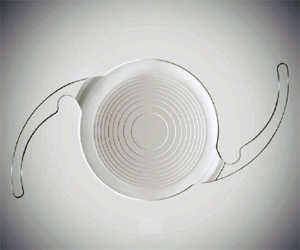
Best for: Clear vision at multiple distances (near, intermediate, and far)
Multifocal lenses are designed with different zones that correct vision at various distances. They aim to reduce or eliminate your need for glasses after surgery.
Pros:
- Reduced dependence on glasses.
- Better overall visual range. (driving, reading, screens)
Cons:
- May cause haloes or glare, especially at night.
- Not suitable for all patients. (those with dry eyes or retinal issues)
3. Extended Depth of Focus (EDOF) IOLs
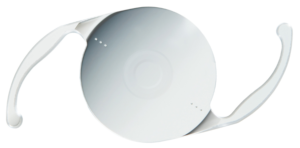
Best for: Smooth, continuous vision from far to intermediate range
EDoF lenses use advanced optics to provide a more natural range of vision, especially for tasks like driving, using the computer, or reading text at arm’s length.
Pros:
- Excellent intermediate vision.
- Fewer visual disturbances than multifocal lenses.
- Good distance clarity.
Cons:
- Reading glasses may still be needed for small print.
- Not fully spectacle-free.
4. Toric IOLs (for Astigmatism)
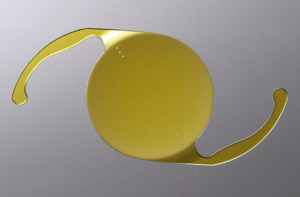
Best for: Patients with corneal astigmatism
Toric IOLs are specifically designed to correct astigmatism and can be combined with monofocal, multifocal, or EDOF lenses. They help improve distance vision and reduce the need for glasses.
Pros:
- Corrects astigmatism effectively.
- Improves vision clarity significantly.
- Reduces or eliminates the need for glasses at the chosen focus range.
Cons:
- Precision alignment required during surgery.
- May still need reading glasses.
How to choose the right lens?
Choosing the right IOL is a personal decision and depends on several factors:
1. Your daily activities and lifestyle
Your vision needs depend heavily on your routine activities.
- Driving: If you drive frequently, especially at night, you may need lenses that reduce glare and offer good distance vision.
- Reading or computer work: Those who spend long hours on screens or reading may benefit from lenses that offer intermediate and near vision support.
- Outdoor or active lifestyle: If you engage in sports, gardening, or travel, you may prefer options that offer convenience and minimal dependence on glasses.
Lifestyle compatibility plays a key role in deciding between monofocal, multifocal, or progressive lenses.
2. Your eye health
The condition of your eyes influences the suitability of certain corrective options.
- Astigmatism: If you have significant astigmatism, you may require toric lenses or custom correction options.
- Dry eyes: Individuals with dry eye syndrome may experience discomfort with contact lenses and may need special coatings or eye drops.
- Retinal or optic nerve conditions: Some eye diseases may limit your visual outcome, making premium lens implants less beneficial.
A thorough eye exam helps your ophthalmologist recommend the safest and most effective option for you.
3. Your visual goals
What you hope to achieve from treatment plays a crucial role in decision-making.
- Reducing dependence on glasses: If you want to see well at all distances without glasses, multifocal or extended depth-of-focus (EDoF) IOLs might be recommended.
- Sharp distance vision only: If you are comfortable using reading glasses, monofocal lenses targeting distance may suit you best.
- Balanced vision: Some patients opt for monovision (one eye for distance, the other for near) to reduce spectacle use.
Clear goals help guide the type of vision correction best suited to your expectations.
4. Budget and insurance coverage
The cost of vision correction varies widely and may influence your choice.
- Standard vs. premium options: Monofocal lenses are usually covered by insurance, while multifocal, toric, or EDoF lenses may require out-of-pocket payment.
- Long-term value: Although premium lenses cost more upfront, they may reduce the need for glasses and additional eyewear, saving money over time.
- Flexible financing or insurance plans: Understanding what your insurance covers and exploring payment plans can help make informed financial decisions.
Discussing costs early helps align your choice with your financial comfort.
Why trust Clarity Eye Surgeons in Canberra?
At Clarity Eye Surgeons, our team of experienced ophthalmologists and cataract specialists in Canberra provide individualised care to ensure the best outcomes. We take time to understand your visual needs and guide you through the lens selection process with confidence and clarity.
With advanced diagnostic tools, modern surgical techniques, and a compassionate approach, we are here to make your cataract journey as smooth and successful as possible.
Conclusion
If you are considering cataract surgery or simply want to understand more about the different types of intraocular lenses available, it is important to seek expert advice tailored to your individual needs. The choice of lens can significantly impact your visual outcome and quality of life after surgery.
At Clarity Eye Surgeons, we are committed to helping you make informed decisions about your eye health. Our experienced team will take the time to assess your vision goals, lifestyle, and eye condition to recommend the most suitable IOL for you. From your initial consultation to post-operative care, we are here to guide you every step of the way with compassion and clinical excellence.
Contact Clarity Eye Surgeons today to book your comprehensive cataract assessment and take the first step towards clearer, more confident vision.
Author bio
Dr Parth Shah is a leading ophthalmologist in Canberra, specialising in cataract surgery and strabismus surgery. With extensive training and experience, he is renowned for his expertise in the field. Dr Shah is dedicated not only to performing successful surgeries but also to patient education. His compassionate approach, combined with technical proficiency, has earned him the trust and gratitude of countless patients. He is a true advocate for eye health and a trusted name in the Canberra ophthalmology community.
FAQs
Intraocular lenses are designed to last a lifetime. They are made of durable materials that typically do not degrade or need replacement.
Yes, in some cases, different types of IOLs may be chosen for each eye to meet specific vision goals (e.g. monovision setup). Your surgeon can help you decide if this approach is suitable.
Lens exchange is possible but not commonly done unless there are complications or major dissatisfaction. It is important to make an informed decision before surgery.
Most modern IOLs include built-in UV filters to help protect the retina from harmful ultraviolet light, similar to how natural lenses function.
No, once implanted, the IOL becomes a permanent part of your eye and is not felt or seen.
Most patients return to their normal routines quickly. However, depending on the lens type, some visual adjustments may be needed, especially in low-light conditions.
Some IOLs—particularly multifocal lenses—may cause haloes or glare in night settings. Discuss your night driving habits with your surgeon when choosing a lens.
The recovery time is generally the same regardless of lens type, but the visual adaptation period may vary, especially with multifocal or EDoF lenses.
Other blogs related to Cataract Surgery
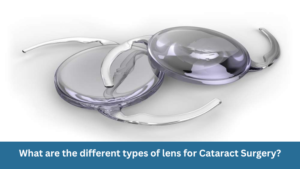
What are the different types of lens for Cataract Surgery?
What are the different types of lens for Cataract Surgery? Cataract surgery is one of the most common and successful procedures performed worldwide. While removing

What to know about posterior subcapsular cataracts?
What to know about posterior subcapsular cataracts? Cataracts are a leading cause of visual impairment worldwide, particularly among older adults. While age-related cataracts are commonly
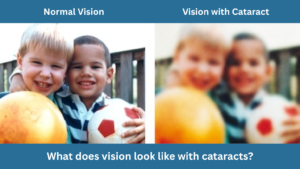
What does vision look like with cataracts?
What does vision look like with cataracts? Cataracts are one of the most common causes of vision impairment worldwide, especially among older adults. Understanding how

Glasses after cataract surgery: recovery & timing
Glasses after cataract surgery: recovery & timing Cataract surgery is a transformative procedure that restores clear vision by removing the eye’s cloudy natural lens and

Cortical cataracts: Symptoms, Causes, Treatment, and More
Cortical cataracts: Symptoms, Causes, Treatment, and More Cataracts are a common eye condition that affects millions of people worldwide, especially with age. Among the different

Laser vs Traditional cataract surgery: Which is better?
Laser vs Traditional cataract surgery: Which is better? Cataract surgery is one of the most commonly performed eye procedures worldwide. With advancements in medical technology,

Cataract surgery & Aging: What seniors should know?
Cataract surgery & Aging: What seniors should know? Cataract surgery is one of the most commonly performed surgeries worldwide, particularly for seniors. As we age,

Cataract surgery and Aging: What patients should know
Cataract surgery and Aging: What patients should know Aging brings wisdom and experience, but it can also bring certain health challenges, such as cataracts. Cataracts

The impact of cataract surgery on night vision
The impact of cataract surgery on night vision The impact of cataract surgery on night vision Cataracts are one of the leading causes of vision

Cataract surgery myths debunked
Cataract surgery myths debunked Cataract surgery is a highly effective and routine procedure that helps restore clear vision, yet many people are hesitant due to
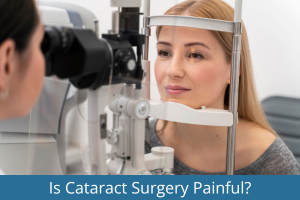
Is Cataract Surgery Painful?
Is Cataract Surgery Painful? Embarking on the journey towards better vision often raises concerns and questions, especially when it comes to surgical interventions. One such

Everything about Cataracts & Surgery: A detailed guide
Everything about Cataracts & Surgery: A detailed guide Cataracts are a common worry, especially as we get older. Imagine your eye’s natural lens gradually getting

Choosing Your Path to Cataract Surgery: Private or Public Practice
Choosing Your Path to Cataract Surgery: Private or Public Practice Introduction Deciding to have cataract surgery is a big deal, and opting to have the

A Comprehensive Guide to Choosing the Right Intraocular Lens (IOL) for Cataract Surgery
A Comprehensive Guide to Choosing the Right Intraocular Lens (IOL) for Cataract Surgery Introduction Cataract surgery is a common and highly effective surgical procedure aimed

Cataract Surgery in Patients with Diabetes: A Comprehensive Guide
Cataract Surgery in Patients with Diabetes: A Comprehensive Guide Cataracts are a common concern for many, but for individuals with diabetes, the journey through cataract

Driving With Cataract and After Cataract Surgery
Driving With Cataract and After Cataract Surgery Driving is a significant part of our lives, offering freedom and independence. But to drive safely, one’s vision

Cataract Surgery in Patients with Glaucoma
Cataract Surgery in Patients with Glaucoma Welcome to Clarity Eye Surgeons, where your eye health is our top priority. In this article, we will explore

The Complete Guide to Cataract Surgery Recovery: Timeline, Tips, and What to Expect
The Complete Guide to Cataract Surgery Recovery: Timeline, Tips, and What to Expect Introduction Cataract surgery is a common and highly effective surgical procedure aimed

How to Choose a Cataract Surgeon: A Comprehensive Guide
How to Choose a Cataract Surgeon: A Comprehensive Guide When it comes to your eye health, selecting the right cataract surgeon is of utmost importance.

Cataract Surgery in Children: Symptoms, Causes, Procedure, Risk and Recovery
Cataract Surgery in Children: Symptoms, Causes, Procedure, Risk and Recovery Introduction Cataract surgery in children is a delicate procedure that can restore a child’s
